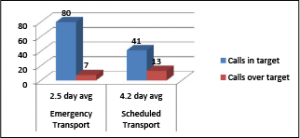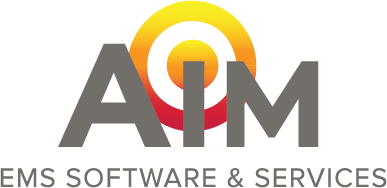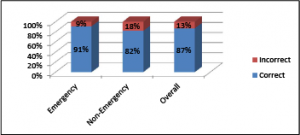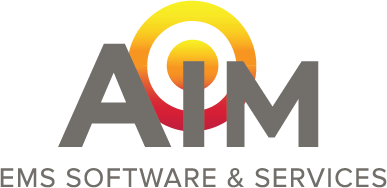
As these relate to EMS workflow, metrics/KPI’s are a way to evaluate how your own organizational processes are performing.
In relation to EMS workflow, metrics/KPI’s are a way to evaluate how your own organizational processes are performing.
Are they working to the highest level possible, or is there room for improvement? Are you providing timely patient care? Is your response time up-to-speed? Is the turnaround time from dispatch to trip to bill to reimbursement acceptable? Are you meeting cash flow thresholds throughout the month?
We will look at these questions and more, in the following overview of metrics/KPI’s and their role in the 5 critical phases of an optimized EMS workflow. The purpose of metrics in process/quality improvement is to develop measurable service delivery standards and evaluate/benchmark EMS organizational performance against those standards.

Call to Dispatch Metrics
Without key metrics for Call to Dispatch, how can operational leads tell if they have enough active trucks available or crews able to meet response time goals? For example, metrics for this phase may include:
- Response Time Stats
PSAP (Public Safety Answering Point)or Dispatch Notified to Arrival on Scene time for Emergency/Non-Emergency- Average Response time for a set period in time.
- Number of EMS calls within acceptable Response Time range.
- Number of EMS calls outside of acceptable Response Time range.
- Scene Time Stats
Arrival on Scene to Departure to Facility time for Emergency/Non-Emergency- Average Scene time for a set period in time.
- Number of EMS calls within acceptable Scene Time range.
- Number of EMS calls outside acceptable Scene Time range.
- Transport Time Stats
Left Scene to Destination time for Emergency/Non-Emergency- Average Transport time for a set period in time.
- Number of EMS calls within acceptable Transport Time range.
- Number of EMS calls outside of acceptable Transport Time range.
- Utilization
- Hours unavailable during a defined period of time.
- Hours in station during a defined period of time.
- Hours on call during a defined period of time.
- Daily calls per hour
- Number of calls per day in each hour interval.
Dispatch to ePCR Metrics
During this phase, there must be clear communications between dispatch and EMS crews. Crews need to know when they are assigned a call, there must be fast and efficient transfer of data from dispatch to the ePCR, and compliance with regulations must be maintained. For example, metrics for this phase may include:
- Dispatch to ePCR complete time alert
Average time from when the ambulance was dispatched to the time the ePCR is completed for a set period of time, including alerts if over the user-defined threshold. - Incomplete ePCR’s alert
Number of incomplete ePCR’s, including alerts if over the user-defined threshold.

- Oldest Incomplete ePCR’s
Age, in days, of the oldest ePCR, including alerts if over the user-defined threshold.

ePCR to QA/QI Metrics
In the third phase of EMS workflow, communication between field crews and quality assurance staff is critical to ensuring complete and accurate patient care reports. If crews aren’t getting their patient care reports turned in on time, if key state reporting and billing data is missing or inaccurate, it may mean delayed state reporting and, more importantly, delayed reimbursement. For example, metrics for this phase may include:
ePCR complete to QA/QI complete time
Average time from when the ePCR was completed to the time the QA process was completed, for a set period of time, with alerts if over the user-defined threshold.Accuracy Rate
Percentage of ePCR’s that did not have to be returned to crew for correction, for a set period of time, with alerts if over the user-defined threshold.
QA/QI to Billing Metrics
As we have observed before, the QA/QI to Billing phase is a cooperative effort, above all else. It is crucial, at this stage, to make sure that the QA/QI process is completed, in a timely manner, so that there are no delays in the billing process. For example, metrics for this phase may include:

QA to Billing time
Average time from when the ePCR QA was completed to the time it was released to billing, for a set period of time, with alerts if over the user-defined threshold.
Incomplete QA
The number of incomplete ePCR’s sitting in the QA queue, with alerts if over the user-defined threshold.
Billing to Reimbursement Metrics
Obviously, billing must be accurate and optimized, in order to stay compliant and maintain a healthy cash flow for your EMS business. Electronic submission of claims is key here, as well as keeping tabs on denials and appeals. For example, metrics for this phase may include:

Billing to First Transmission time
Average time from when the ePCR was released to billing until the time the bill was transmitted, for a certain period of time, with alerts if over the user-defined threshold.
Billing to First Payment time
Average time from when the ePCR was released to billing until the time that the first payment was posted, for a certain period of time, with alerts if over the user-defined threshold.
Billing to Final Payment time
Average time from when the ePCR was released to billing until the time the ePCR was closed, for a set period of time, with alerts if over the user-defined threshold.

Cash posted Month-To-Date
The total cash amount posted month-to-date, with alerts if under a set dollar amount for aggregated monthly average.
Conclusion
In summary, a defined EMS workflow is the critical, first step in achieving efficiency and quality dispatching, patient care reporting, and billing. However, just because you have a defined EMS workflow process, doesn’t guarantee the steps in the process are getting executed in an efficient and quality manner.
Furthermore, it is important to define and monitor metrics/KPIs to be able to measure the efficiency and quality of your EMS workflow process. This will allow EMS organizations to monitor, measure, and make changes that optimize the efficiency and quality of EMS workflow on a continuous basis.
How AIM Can Help
AIM Online Software and Services offers end-to-end integrated EMS workflow, which gives EMS providers the ability to monitor, measure, and optimize the efficiency and quality of your EMS organization.





